Back to: Finishing First Steps
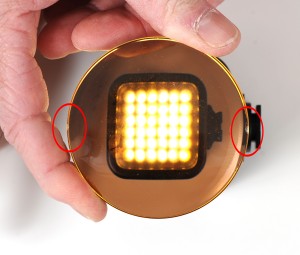
In this photo, in the red circles, you can just see where this lens has two cut outs to indicate the 180 degree line. Other lenses may have the temporary painted lines like progressives. If in doubt you MUST call the lab and find out the proper procedure for the lens type you have. Any polarized lens with an axis above 0.75 you will assume orientation is correct when the lens is on axis.
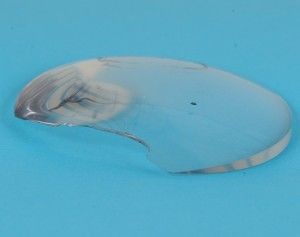
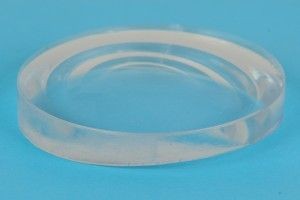
If you are new to finishing do not be alarmed when you get your first few un-cut jobs back from the lab. An edger can handle high prescriptions. A high minus lens will appear quite thick and in plus lenses in an effort to provide you with the thinnest lenses possible you may receive lenses that appear broken but will cut out just fine.
Rules for Finishing:
BE NEAT
Work as if someone else could come in and complete the job you have begun.
Always work Right lens first
Always mark lenses with a grease pencil or AR pen R for right and L for left. (For finishing these are on the front of the lens facing you.)
Always keep the Right lens on right and the Left lens on the left in the work tray
Always do the same steps in the same order and always do things the same exact way. You will be surprised the mistakes you will catch BEFORE you cut the lens wrong if you are consistent. This means even the little things like always placing the “tongue” of the leap pad on the block in the same direction every time.
Don’t say I didn’t warn you!
Definition of finishing for jobs that do not require prism:
The art and science of placing the lens optical center (OC) directly in front of the patient’s visual axis to fill the prescription as written by the doctor.
Definition of finishing for jobs that do require prism:
The art and science of placing the lens major reference point (MRP) in the proper place to fill the prescription as written by the doctor. (More on working with SV lenses and prism in the prism lesson)
Calculations for single vision lenses work from the OC, for lined muti-focals from the top and center of the segment, and for progressives from the fitting cross.
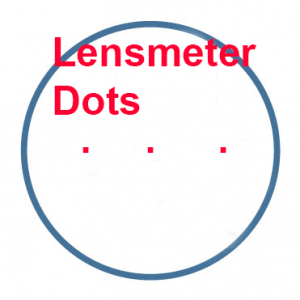

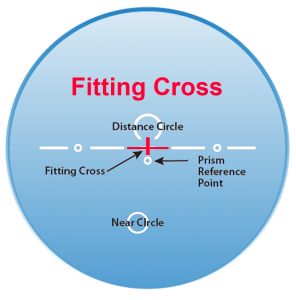
Unless an OC height is given (or you are creating wanted prism in a lens) single vision lenses are only shifted along the 180 degree line or right and left. If an OC height is given then the lens will also be moved along the 90 degree or up and down.
Regardless of the type, edgers calculate all measurements from the exact center of the eyewire opening. The edger assumes that the block that holds the lens in place for finishing is affixed to the lens in the proper position. In a pattern edger the edger assumes that the center of the pattern will correspond to the center of the eyewire opening. In a patternless edger it will assume that the center of the block and the center of the chuck will correspond with the center of the eyewire opening.

Although exaggerated this illustration is the best way to think about a frame when doing lay-out work. EVERY calculation works from the center of the red X.
Do I need to move my lens OC, segment or fitting cross in from the center of the X towards the nose?
Away from the center of the X towards the temple?
Do I need to move my OC up and in?
Do I need to move it out and down?
The blue line represents 1/2 the B measurment and we use that for OC heights, segment heights and fitting heights.
